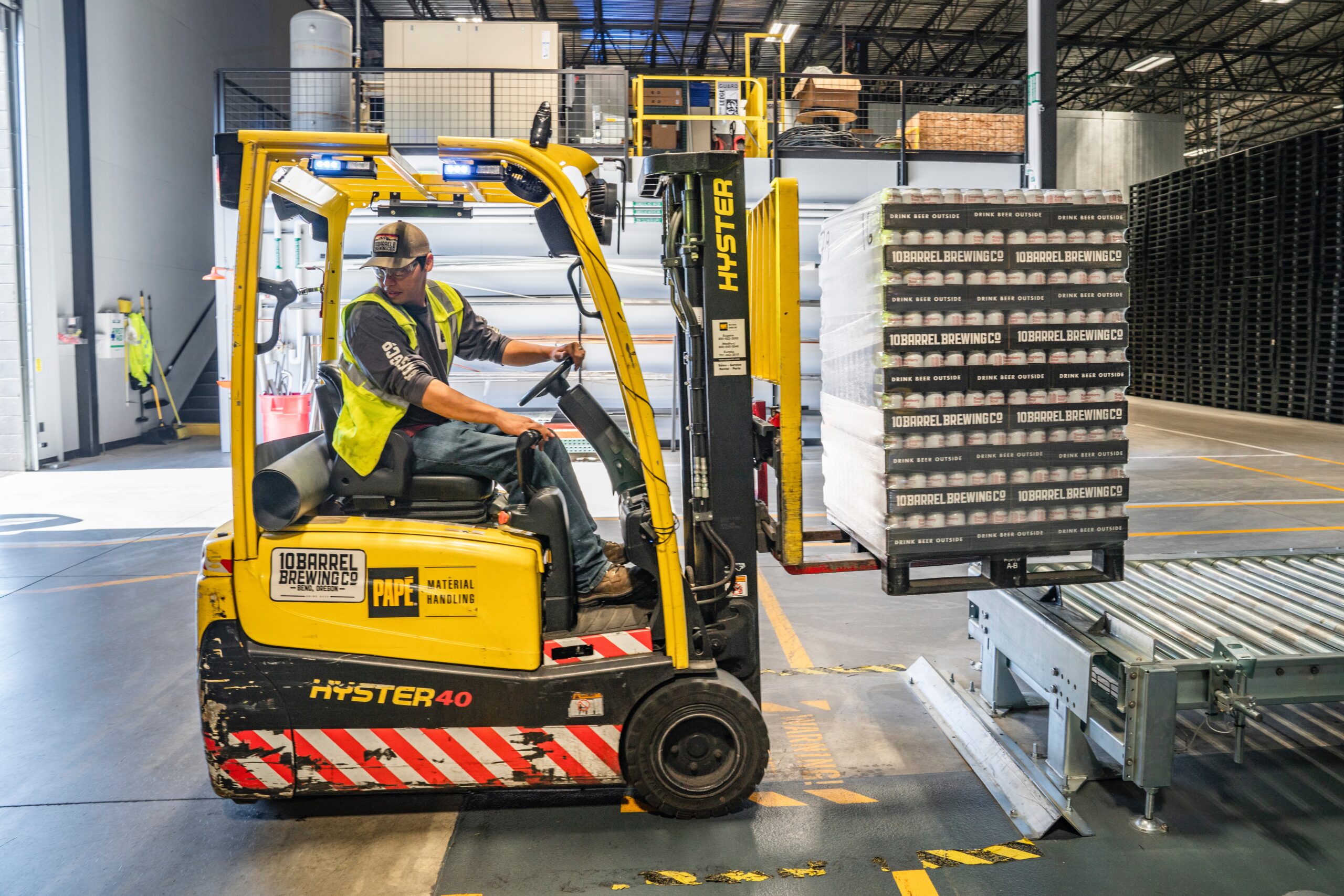THE CANADIAN EXPERIENCE CLASS: BEST WAYS TO GAIN CANADIAN WORK EXPERIENCE AND QUALIFY FOR PERMANENT RESIDENCY
If you want to work in Canada, having Canadian work experience can make all the difference. This guide covers everything you need to know about Canadian work experience, including what it is, why it matters, and how to gain it.
Happy reading!
Because of the limitless opportunities, Canada remains one of the most sought-after destinations for immigrants seeking greener pastures.
It’s estimated that by 2025, over 500,000 newcomers will be welcomed to the country- the most ever welcomed in a single year.
Of course, there are many things to love about ‘The Land of Maple Syrup.’ Aside from the high quality of life, universal healthcare system, diverse, multicultural population, and abundant job opportunities, one of the most attractive qualities for immigrants is the ease with which they can work and permanently reside within Canada.
If you’re an international student or worker with the right qualifications and considering gaining permanent residency in Canada, then the Canadian Experience Class (CEC) program is probably the best option. Why?
Because it is designed for people who have gained work experience in Canada and intend to reside permanently. But what is CEC all about?
Canadian Experience Class (CEC)
The Canadian Experience Class, also known as Express Entry, is a Canadian Immigration Program that allows you, as a temporary worker or student, to apply with your education and work experience and become a Canadian permanent resident.
Although the Canadian government values immigration for its ability to boost the economy, Canada doesn’t just open its beautiful gates to every Tom, Dick, and Harry. Like a beautiful damsel, she’s intentional about who she lets come in. This is evident in Canada’s Immigration program, which chooses skilled workers based on their ability to contribute to Canada’s economy.
Canada uses a points-based system, The Comprehensive Ranking System, to rank candidates in the Express Entry pool. Then they select the highest-ranking profiles from this pool and invite them to apply for Canadian permanent residence.
If you’re eligible, you can go ahead and submit your Express Entry profile on the Immigration, Refugees and Citizenship Canada website and wait patiently because every two weeks, IRCC makes Express Entry draws and gives permanent residence to candidates with the highest Comprehensive Ranking System score.
However, to receive an Invitation to apply for permanent residency, you must pass the eligibility criteria. After receiving the Invitation to Apply, you must complete your application process within 60 days and submit the relevant documents like Police certificates, medical examination, and proof of financial support.
These can be gotten easily, but what about your work permit? You would need the right amount of professional work experience to get this.
Well, where there’s a will, there’s a way. For a start- you must be skilled and hard-working to earn excellent work experience. And your professional work experience must be paid work, including paid wages or earned commission. Oh… volunteer or unpaid internships are not counted as work experience under Canadian Experience Class.
While on your path to gaining work experience, you can work part-time or full-time jobs. Working at least 30 hours weekly for full-time employment would be best. This must total up to 1,560 hours within three years.
As for part-time jobs, you can work more or less than 15 hours per week as long as it totals up to 1,560 hours.
By the way, any job that exceeds 30 hours per week will not be counted. Slow down, workaholic. The Canadian Government cares about your well-being. They don’t want you burning out early before contributing massively to their economy.
Now that you have a general overview of what it takes to gain permanent residency through work experience, we take a step further.
Below is a step-by-step guide detailing gaining Canadian work experience and qualifying for permanent residency under the Canadian Experience Class. Sit back, relax, and enjoy!
READ ALSO!!!
UNDERSTANDING CANADIAN IMMIGRATION POLICIES AND REQUIREMENTS: BEST GUIDE TO THE APPLICATION PROCESS
IMMIGRATING TO CANADA AS AN ENTREPRENEUR; OPPORTUNITIES AND CHALLENGES FOR STARTING A BUSINESS
Steps to Gain Canadian Permanent Residency
Step 1: Determine Your Eligibility
Before planning to reside permanently in Canada, you must cross-check to ensure you are eligible for the Canadian Experience Class program. To be eligible, you must meet the following requirements:
- At least one year of full-time skilled work experience in Canada in the last three years (or the equivalent of part-time work).
- Your work experience must be in a National Occupational Skill level 0, A, or B occupation.
- You must have gained work experience while on a valid work permit.
- You must have met the minimum language requirements for your occupation by passing approved language tests.
- You must have obtained your work experience legally.
- You must plan to live in any province other than Quebec.
Once you have determined your eligibility, you can move on to the next step.
Step 2: Apply to Get a Work Permit
Getting a work permit is crucial if you wish to gain work experience in Canada- You must do something other than barge in and go straight to working anywhere.
There are also different types of work permits. Hence it would be best to determine which is right for you based on your occupation or skill and how long you wish to stay.
The two types of work permits are; Employer-Specific and Open work permits, which cost roughly about $155, which is pretty fair.
You can apply for a Canadian work permit online or through the Canadian embassy in your home country.
To avoid processing delays, you must submit your biometrics and necessary documents outside or within Canada.
Once your work-permit application is approved, you’ll receive an approval letter that says you can work in Canada. This letter is called the port of entry. However, this letter is not your work permit. You will get your work permit at the port of entry the day you arrive in Canada.
Step 3: Begin Job Hunting
Congratulations! You can start hunting for a job now that you have your work permit. Luckily, Canada has enough jobs to go around.
There are many ways you can find a job in Canada. For example, you can explore Job search websites, job fairs, and recruitment agencies.
Lest I need to remember to mention, networking is one of the most effective ways to get a job in Canada because it gives you access to valuable connections with the right people.
Since the right people tend to make, the right things happen. How do you meet them?
You can meet the right people by joining industry associations or attending social and professional events in your field to get acquainted with like-minded individuals.
One easy way to find jobs is through a Job Match account with Job Bank, a database that can connect you to employers needing your skills.
Another easy way to get a job is to contact Provinces and territories to consider you for a Provincial Nominee Program.
As I said, Canada has many job opportunities available for you as long you have value to offer and are on the right side of the law. Of course.
After getting your work permit and successfully securing a job, it’s time for the next stage.
Step 4: Preparing for the application process
They say, “A stitch in time saves nine.”
Before submitting your application for permanent residency, ensure you gather all the necessary documents. You will be asked to submit your work permit, language test results, tax records, and proof of work experience. Make sure to have them in order. And ready to submit when you apply. It’s also a good idea to seek advice from an immigration lawyer or consultant to help you navigate the application process. After all, a little professional advice never hurts anyone!
Step 5: Submit your application
Once you have prepared all the necessary documents, it’s time to submit your application for permanent residency under the Canadian Experience Class. You can apply online through the government’s official website or present a paper application by mail. Whichever is convenient for you, double-check all the documents and information before submitting to avoid any errors or delays.
The next step is t where you feel the most anxiety- ‘The Waitingtstage.’
Step 6: Wait for the Government
After you have submitted your application, it’s time to wait for a decision from the government.
During the waiting stage, you can up your ante by Improving your education, language, and occupational skills.
The processing time for a Canadian Experience Class application can vary, but it usually takes around six months to receive a decision. from the Canadian government. You can check the status of your application online and update any information if necessary also important to note that; you will get a refund if your application is returned. However, the biometrics fee is non-refundable.
Step 7: Receive your permanent residency
Once your application is approved, you will receive your permanent residency status, allowing you to live and work in Canada permanently.
Now you can go on social media s make your peers jealous by tweeting congrats; I have successfully gained Canadian work experience and qualified for permanent residency under the Canadian Experience Class program.”
God bless The Great White North!
Conclusion (Canadian Work Experience)
Like every goal worth accomplishing, gaining Canadian work experience and qualifying for permanent residency under the Canadian Experience Class program requires effort, determination, and patience.
However, the rewards of living and working in Canada are well worth it, including a high quality of life, a strong economy, and a diverse and welcoming community. By following the steps detailed herein and seeking professional advice, you can increase your chances of success.
Best of luck!







